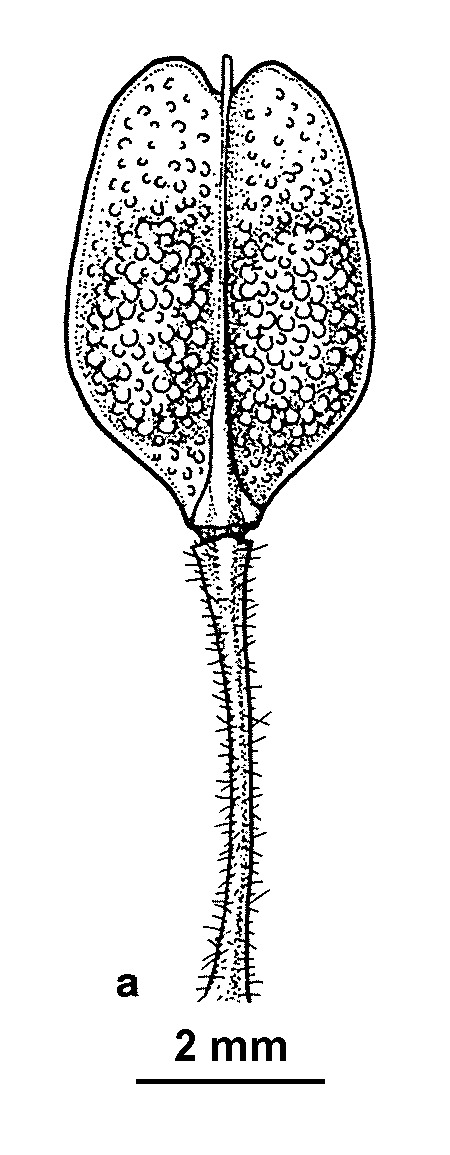Lepidium campestre
(L.) R.Br. Field CressAnnual, biennial or perennial, sometimes rhizomatous herb, 20–60 cm high, usually greyish from a dense indumentum of spreading, simple hairs c. 0.5 mm long; stems erect. Basal leaves sessile or petiolate, ovate to obovate, to 7 cm long, entire or toothed, sometimes slightly lobed, non-persistent; stem leaves clasping, narrowly triangular to linear-lanceolate, to 4 cm long, entire or toothed, basal auricles prominent and acute. Inflorescence an elongating raceme. Sepals c. 1.5 mm long; petals c. 2 mm long, clawed, white; stamens 6. Fruit broadly ovate, 5–6 mm long, 4–5 mm wide, broadly winged, notched at apex, valves densely papillose; style c. 0.5 mm long, shorter than or slightly exceeding valves; pedicels c. 5 mm long, pubescent. Flowers spring–summer.
MuM, VVP, VRiv, GipP, OtP, Gold, CVU, NIS, HSF, HNF, OtR. Also naturalised NSW, Tas. Native to Europe. An uncommon weed of roadsides and crops (e.g. Hamilton, Ballarat, Trentham, Whitfield, Omeo areas).
Entwisle, T.J. (1996). Brassicaceae. In: Walsh, N.G.; Entwisle, T.J., Flora of Victoria Vol. 3, Dicotyledons Winteraceae to Myrtaceae, pp. 399–459. Inkata Press, Melbourne.
 Spinning
Spinning


